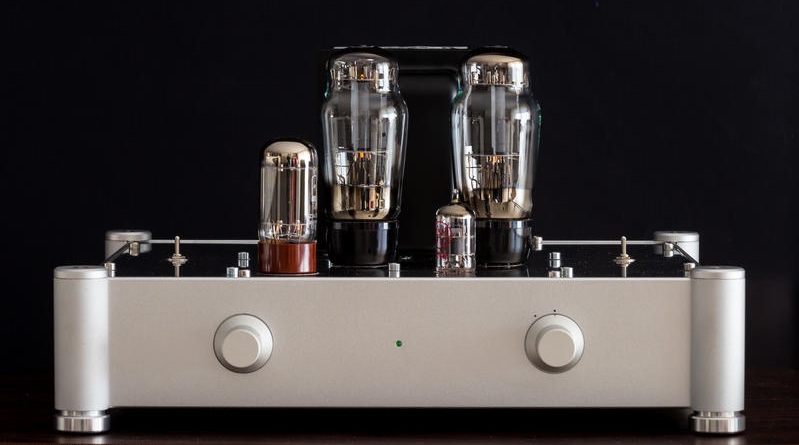JET5
Integrated IT for Clinical Staff
Audiophile Hifi
Digital Sources
Why?
Early digital (CDs) got itself a bad name in hifi circles: the technology involved a compromise. CDs gave us no more crackles and scratches, no more reduced sound quality as the needle approached the slower-running record centre, zero cross-talk, lower distortion, higher dynamic range. But always a hint of harshness to the sound, a lack of perceived "warmth" and "musical involvement" that couldn't be ignored simply as psychoacoustics, or the fact that studio-mastering had been geared to the weaknesses of vinyl rather than the strengths of digital.

Years, arguments, discussions, research, opinions galore, and we now find that vinyl is making a comeback and yes it is on audiophile grounds. But digital has also moved on big-time and the arguments are now resolved. High quality digital sources give you a direct-line to the mixing desk or recording platform that simply cannot be argued with—it is the best source for music reproduction you can possibly have. And low-fi digital (eg streaming mp3s) is convenient and good-enough.
As an audiophile with both digital and vinyl I know which camp I'm in. Vinyl will trump a digital chain with some weak points, but if your digital chain is strong... it's not a contest. For the digital stuff, it starts with how that digital stream is converted into an analogue audio signal. Digital chain critical point number 1.
High-end DACs
Why?
It might seem like a trivial thing to do, take a digital stream and convert it to an analogue signal suitable for amplification. But it's not. Digital-Audio Converters (DACs) are hight-precision pieces of kit that are designed to provide the best quality signal to your amplifier. You enter a world of microsecond timing errors, jitter, interpolation, clocking and reclocking, over-sampling. All of it affects the sound. A low quality DAC will pull your entire audio system down: you simply won't enjoy the music so much.

On the other hand, a high-end DAC will make more difference across the board than any other component in your hifi. If you want a large loud choir to sound like a group of individuals singing rather than a smeared noise, then you only have a chance if your DAC is half-way decent. If you want to hear loud distorted guitar sounding like it actually sounded in the recording studio rather than with a sheen of additional blurring to the sound then use a decent DAC.
Over the years, I've ended up with a heap of DACs of varying quality. My main system has a very good one (the Audio-gd DAC-19): there's almost certainly better out there but sadly there are limits to how much I can spend. See the DAC page for more info.
Low-powered Valve Amplifiers and Back-loaded Horn Loudspeakers
Why?
The final two parts of the hifi chain involve amplification of the sound with the amplified sound driving the speakers. There are a number of options here, and to be honest there is no clear winner for all aspects of the sound, but there is no doubt that the one which ticks the most audiophile boxes is the world of flea-powered valve (tube) amplifiers and high-efficiency loudspeakers.

For various reasons this combination can give you a mind-blowing level of transparency, detail, and clarity that is very difficult to achieve with the more traditional high-powered amps and low-efficiency speakers. There is no musical genre that doesn't benefit from these characteristics.
Sadly, to build these final components well is expensive. I went down the DIY route, which is not everyone's cup of tea. However there is a thriving second-hand market that can help you here, and some careful buying of Chinese-assembled gear is a possibility if funds are tight.
Tripath Amps
One fascinating, recent chapter in amplification was the introduction (and subsequent fall) of the Tripath chip-amps. With careful design and good components these offered astonishing sound quality that began to tread on the toes of some rather expensive valve gear. I have a very inexpensive Topping TP30 mk2 (now discontinued) currently in my system and this tiny box comes terrifyingly close to my big no-expense-spared 45 SET valve amp. A truly great budget option for your amplifier.
The original manufacturing runs of Tripath chips have now all been used, and apparently it is now only clones that are available. I don't know if these live up to the legendary sound quality of the original chips. This simply muddies the water—the Tripath story is a sad one of missed opportunity and unfortunate business decisions.
Back-loaded Horn Loudspeakers
The natural, efficient, companions to low-powered amps. These are awkwardly large and rather living-room unfriendly. Although they tend to lack a real kick in the bass (it has been described as a fist with a velvet glove), they provide coherence, transparency, imaging, and a natural midrange that just can't be beaten. My own horns include a ribbon-tweeter that ensures no roll-off at high frequencies and enables razor-sharp transients. The crossover is an L-pad design with no components at all in the signal path to the main wide-range driver.
My wide-range drivers (Fostex FE208E∑) have cones made from banana plant fibre: this is 10x lighter than paper so is able to track complex waveforms more quickly and accurately than traditional drivers resulting in what audiophiles call a very "fast" loudspeaker.

Kirishima horns like mine. They need to be this big to get the bass-response flat down to that all-important 40hz (low E on a bass guitar).